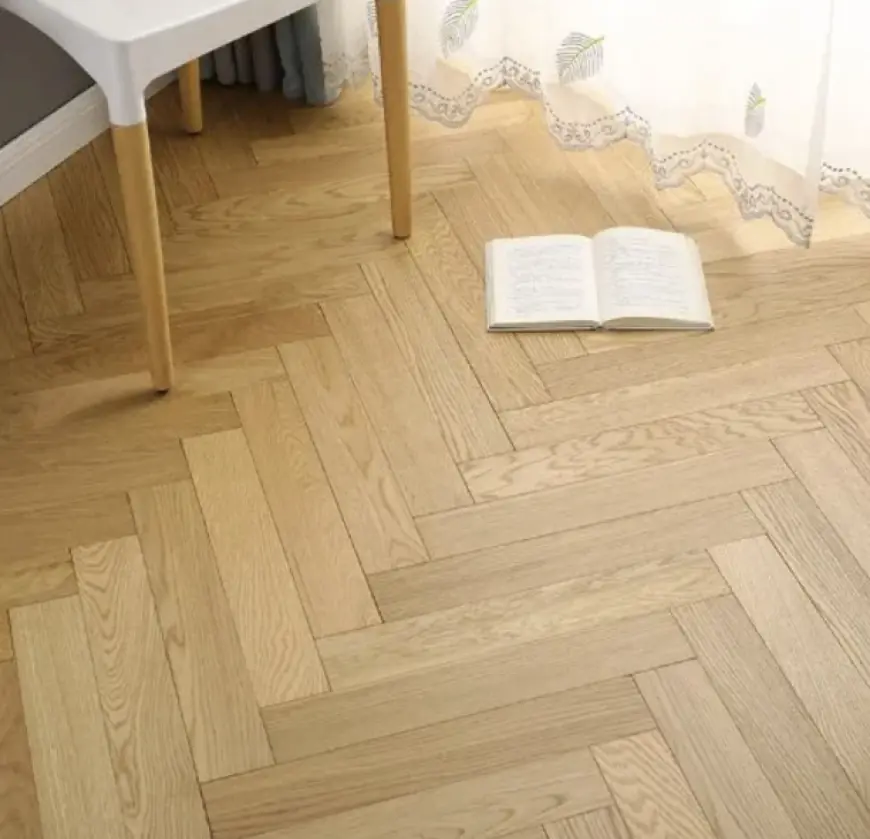Timber Parquet Flooring vs. Hardwood: Which is Better?

When it comes to choosing flooring for your home or office, timber parquet flooring and traditional hardwood are two of the most popular options. Each has its unique appeal, benefits, and drawbacks, making the decision largely dependent on your style preferences, budget, and practical needs. This blog explores the key differences between the two, helping you decide which option is better for your space.
1. Understanding the Basics
Timber Parquet Flooring
Timber parquet flooring is composed of small pieces of timber arranged in geometric patterns such as herringbone, chevron, or basketweave. It is prized for its decorative appeal and adds a touch of elegance to any room. Parquet can be made from a variety of wood species, giving homeowners flexibility in terms of color and texture.
Hardwood Flooring
Hardwood floors are made from solid wood planks milled from a single piece of timber. They are known for their timeless aesthetic and natural charm. Available in various wood species like oak, maple, and walnut, hardwood flooring provides a durable and long-lasting surface.
2. Durability and Longevity
Timber Parquet Flooring
While durable, the smaller pieces used in parquet flooring are more susceptible to damage over time compared to solid hardwood. The intricate patterns can make repairs challenging and potentially expensive. However, modern manufacturing techniques, such as engineered parquet, offer enhanced resistance to wear and tear.
Hardwood Flooring
Hardwood flooring is renowned for its durability, often lasting decades or even a century with proper care. Solid hardwood can be sanded and refinished multiple times, which helps restore its original look and extend its lifespan. However, it can be prone to warping in high-moisture environments if not properly maintained.
3. Aesthetic Appeal
Timber Parquet Flooring
Parquet flooring excels in its visual appeal. The intricate designs and patterns add an artistic element that elevates the sophistication of any room. It's a fantastic choice for spaces where you want the flooring to be a focal point.
Hardwood Flooring
Hardwood floors have a classic and natural beauty that suits both traditional and modern interiors. Their seamless appearance makes them ideal for creating a cohesive look in open-plan spaces. While they lack the artistic flair of parquet, their simplicity often appeals to minimalist tastes.
4. Installation and Maintenance
Timber Parquet Flooring
Installing parquet flooring requires precision, making it more labor-intensive and expensive than traditional hardwood. The intricate patterns demand skilled craftsmanship. When it comes to maintenance, regular sweeping and occasional refinishing are needed to preserve its beauty.
Hardwood Flooring
Hardwood flooring is easier and quicker to install, especially for experienced professionals. Maintenance involves sweeping, mopping, and occasional refinishing. Its straightforward upkeep makes it a practical choice for busy households or commercial spaces.
5. Cost Considerations
Timber Parquet Flooring
Parquet flooring is typically more expensive than hardwood due to the intricate labor required for its design. The cost varies depending on the type of wood and pattern chosen. However, it adds significant value to your property, making it a worthwhile investment for luxury interiors.
Hardwood Flooring
Hardwood flooring is generally more affordable than parquet, particularly if you opt for domestic wood species like oak or maple. Exotic hardwoods can raise the price. Despite the initial investment, the longevity of hardwood makes it a cost-effective choice in the long run.
6. Environmental Impact
Timber Parquet Flooring
Parquet flooring can be eco-friendly if sourced from sustainable forestry practices. Many engineered parquet options use layers of wood, reducing the demand for solid timber.
Hardwood Flooring
Hardwood flooring is equally sustainable when sourced responsibly. Reclaimed wood is an excellent choice for reducing environmental impact while achieving a unique aesthetic.
7. Best Applications
Timber Parquet Flooring
Ideal for formal spaces such as living rooms, dining areas, and offices, parquet flooring is perfect for creating a statement. Its luxurious appearance complements high-end interiors but may not be the best choice for high-traffic or moisture-prone areas.
Hardwood Flooring
Hardwood flooring is versatile, working well in almost any room, from bedrooms and hallways to kitchens and living areas. It’s particularly suited for families due to its resilience and ease of maintenance.
8. Key Pros and Cons
Timber Parquet Flooring
Pros:
-
Striking, artistic patterns.
-
Luxurious and unique aesthetic.
-
High property value addition.
Cons:
-
Expensive and labor-intensive installation.
-
Requires skilled maintenance.
-
Less durable in high-moisture environments.
Hardwood Flooring
Pros:
-
Timeless and natural appeal.
-
Long lifespan with refinishing options.
-
Easy to install and maintain.
Cons:
-
Prone to scratches and dents.
-
May warp in humid conditions.
-
Less visually distinctive compared to parquet.
Conclusion: Which is Better?
The choice between timber parquet flooring and hardwood flooring ultimately depends on your personal preferences and needs:
-
Choose Timber Parquet Flooring if you’re looking for a visually striking and luxurious option to elevate the style of formal spaces. It’s a great choice for homeowners who value design and are willing to invest in intricate craftsmanship.
-
Choose Hardwood Flooring if durability, ease of maintenance, and timeless appeal are your priorities. It’s a versatile option suitable for various spaces and budgets.
Both options bring warmth and character to any room, ensuring that whichever you choose, you’ll enjoy a beautiful and functional flooring solution for years to come.












